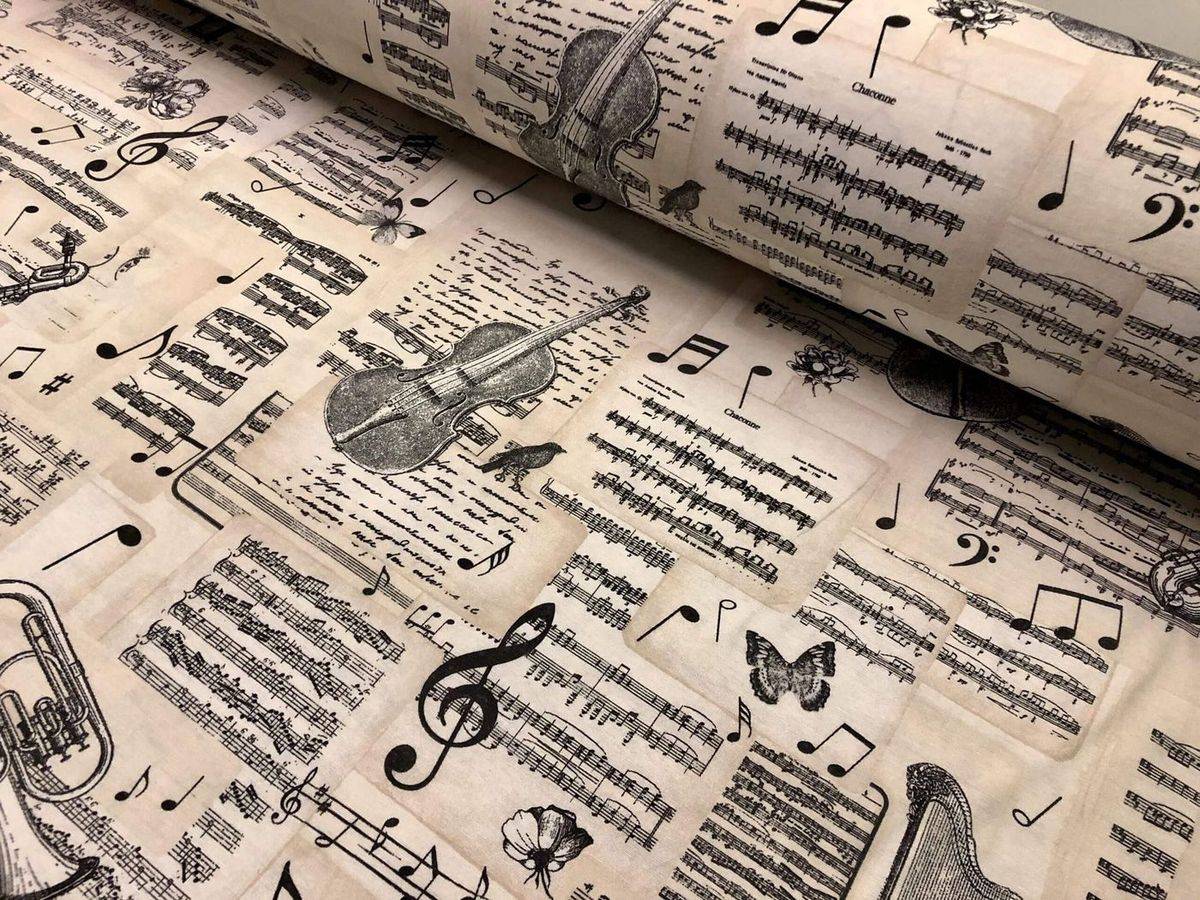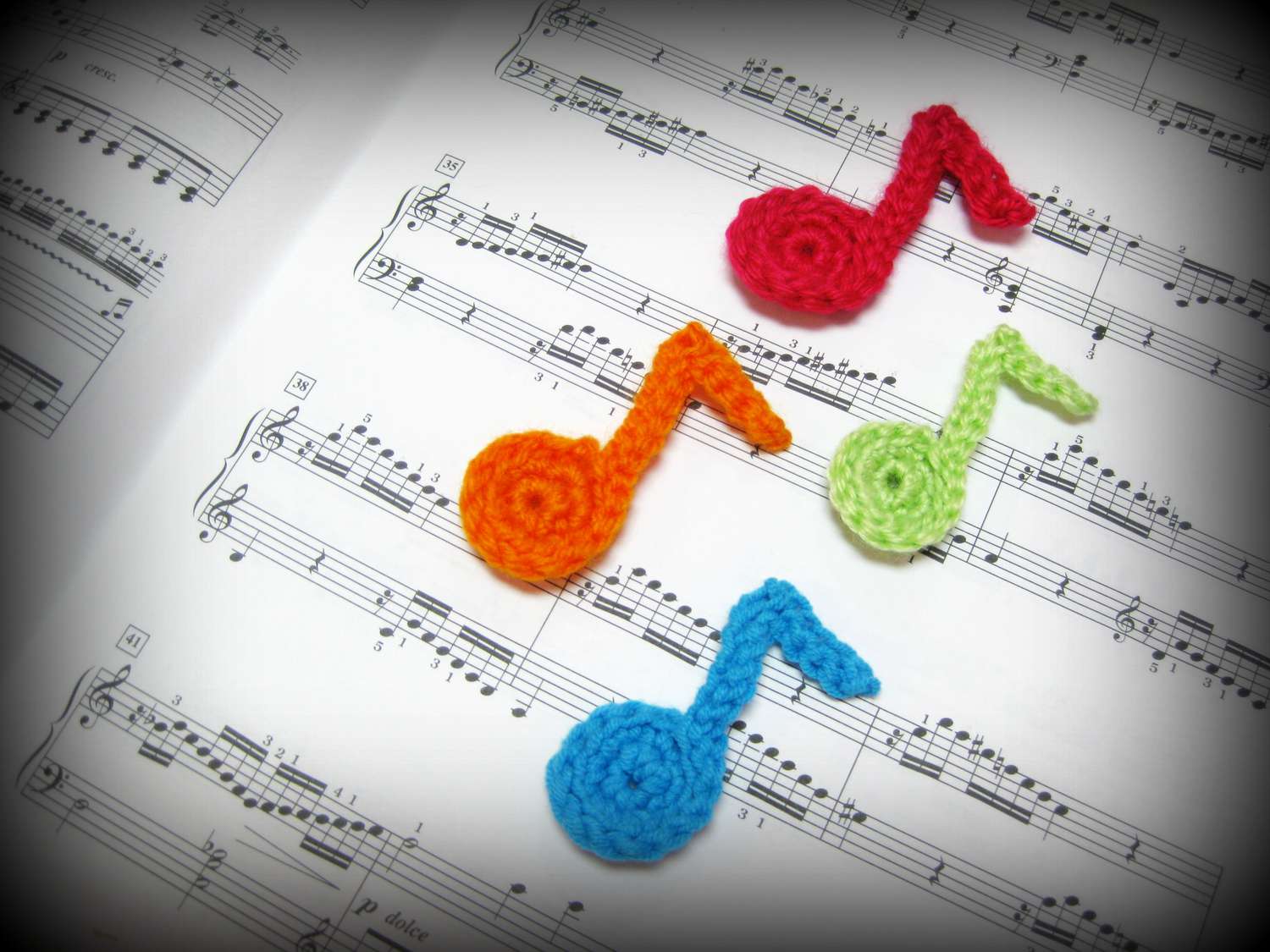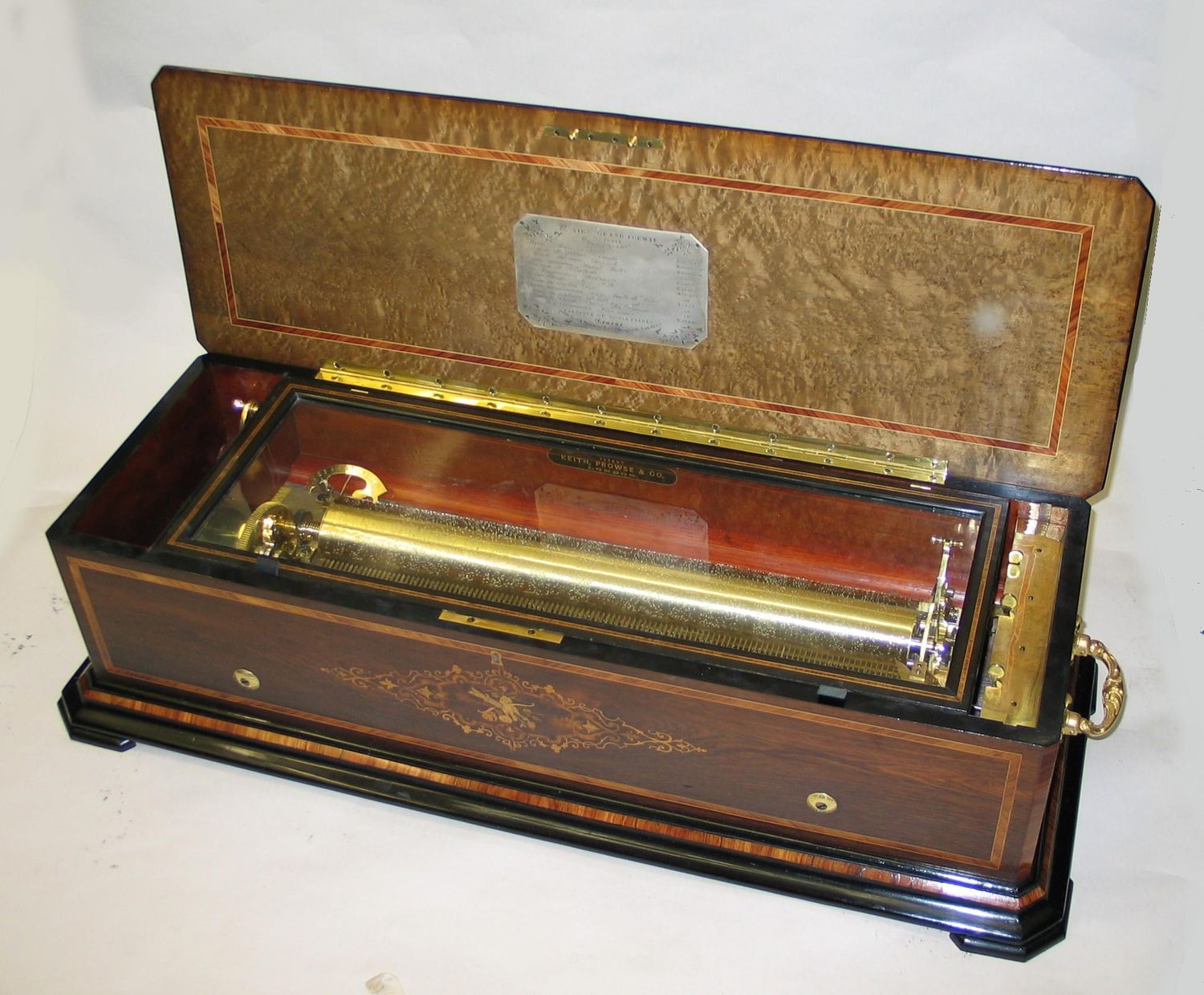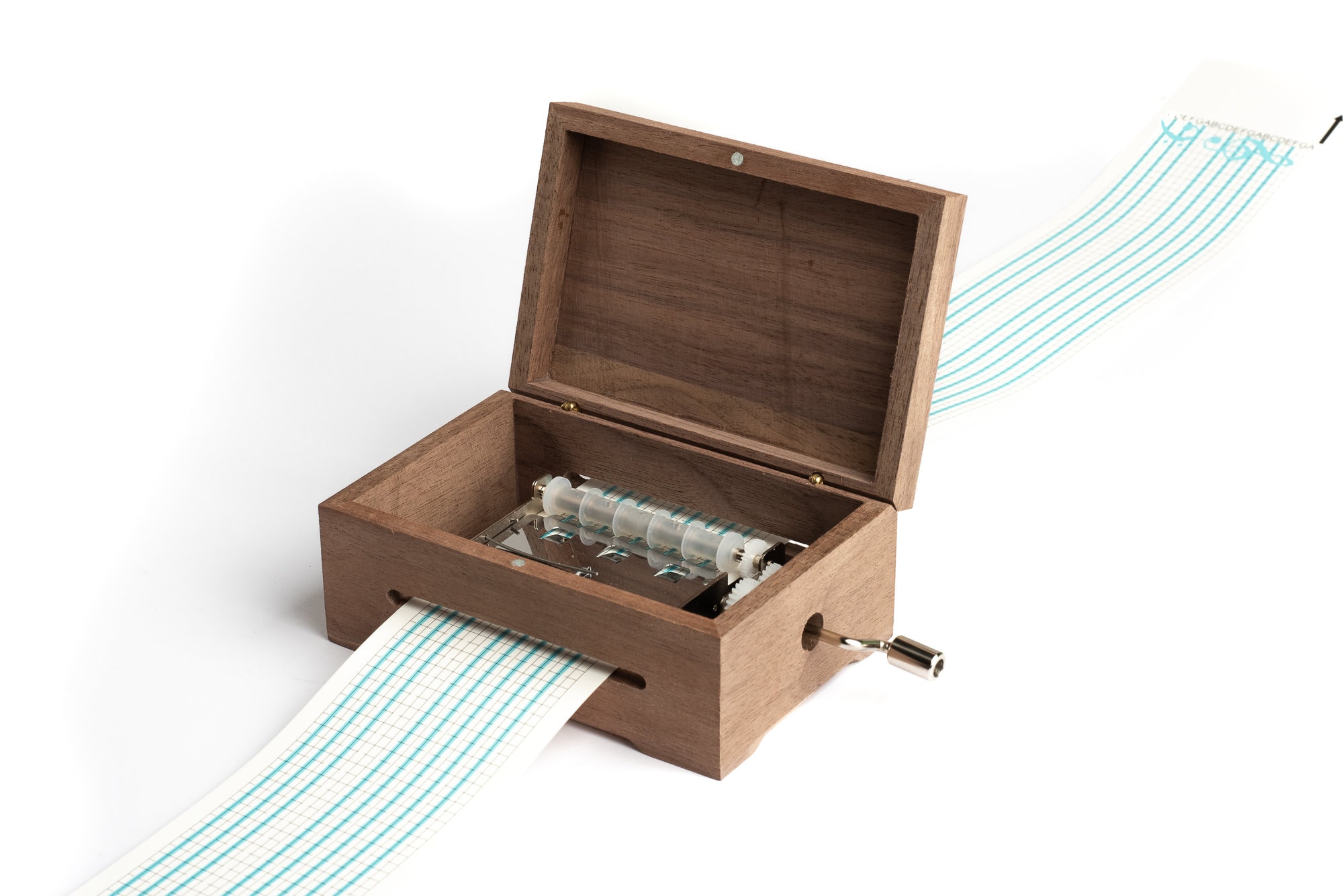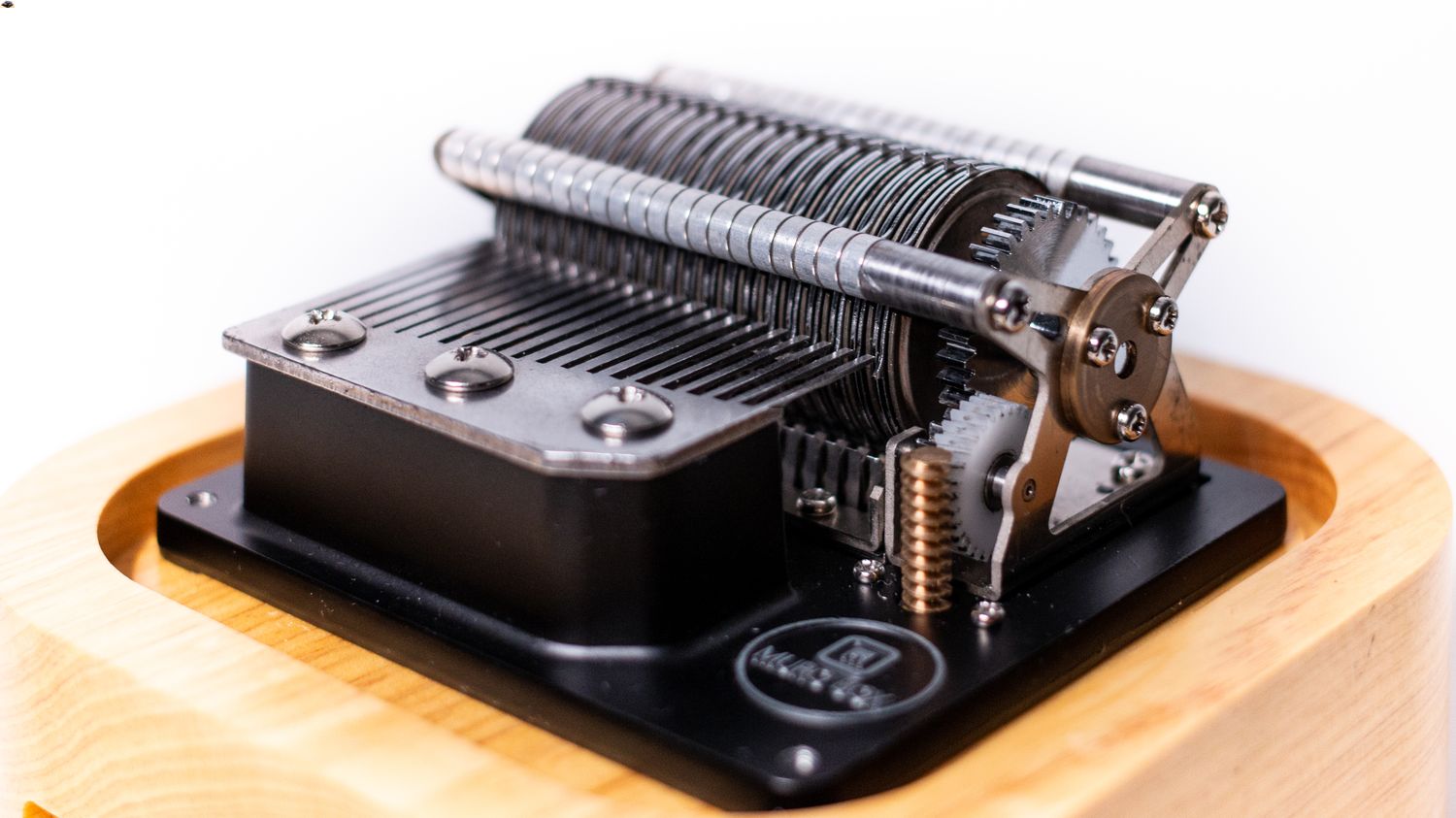Home>Devices & Equipment>Music Box>How Many Notes In A Music Box
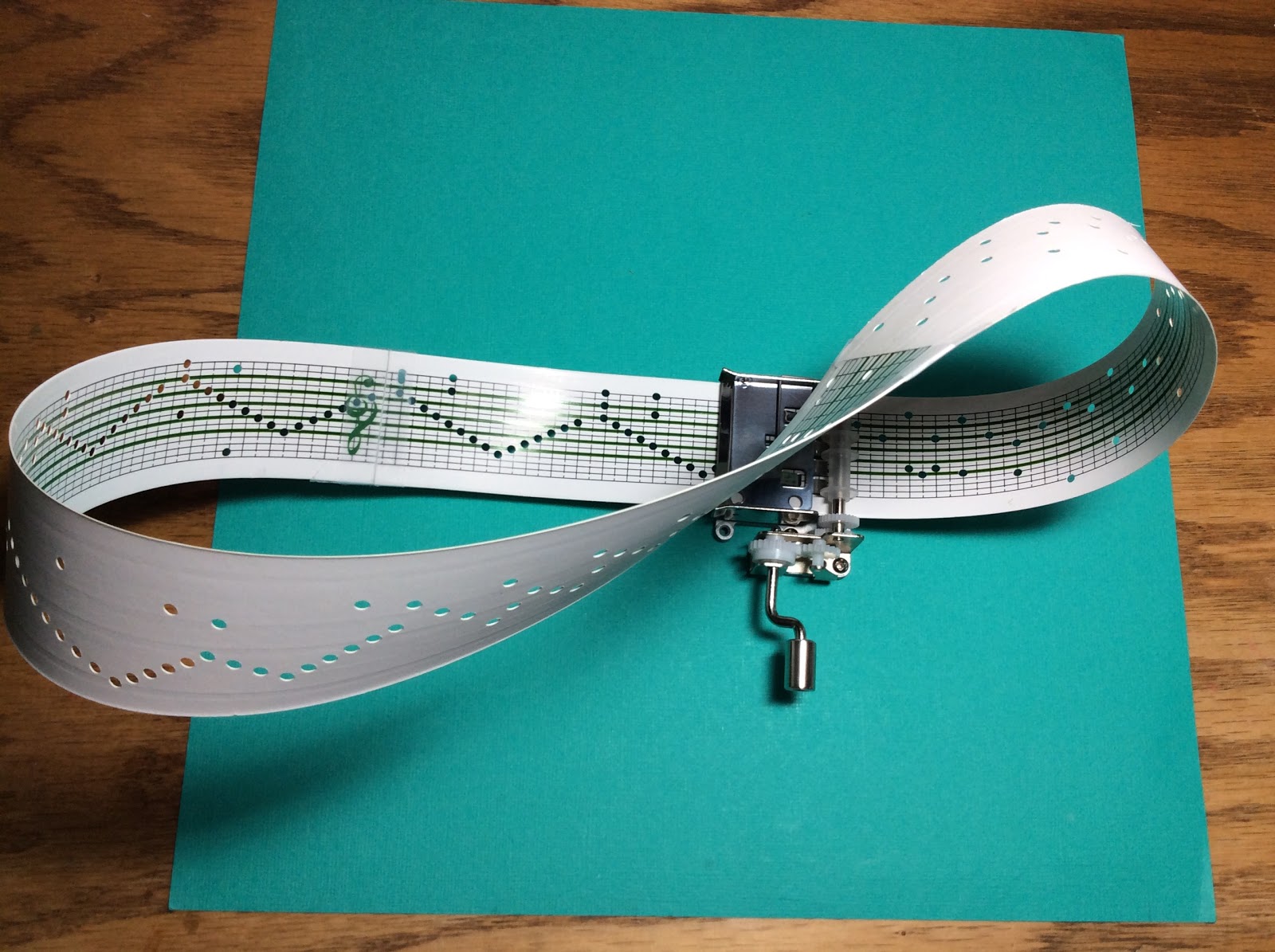

Music Box
How Many Notes In A Music Box
Published: January 11, 2024
Looking to learn about music boxes? Find out how many notes are in a music box and explore the enchanting world of these beautiful instruments.
(Many of the links in this article redirect to a specific reviewed product. Your purchase of these products through affiliate links helps to generate commission for AudioLover.com, at no extra cost. Learn more)
Table of Contents
Introduction
Music boxes have captivated people for centuries with their charming melodies and whimsical designs. These intricate and delicate instruments are often cherished as decorative pieces, cherished family heirlooms, or treasured gifts. With their ability to create beautiful tunes at the turn of a crank or the lift of a lid, music boxes have become synonymous with nostalgia and enchantment.
In this article, we will take a deep dive into the world of music boxes, exploring their history, mechanism, types, and the fascinating question of how many notes they can produce. Whether you’re a music aficionado, a collector, or simply curious about the inner workings of these captivating devices, this article will provide you with insights into the fascinating world of music boxes.
From the antique music boxes of the 18th century to the modern iterations available today, music boxes have a rich history that has evolved along with advancements in technology and musical tastes. So, let’s embark on a journey to uncover the secrets of music boxes and discover the magic they hold within their finely crafted cases.
History of Music Boxes
The beginnings of music boxes can be traced back to the late 18th century in Europe. The first music box, also known as a musical snuff box, was invented by watchmakers who were skilled craftsmen in creating intricate mechanisms. These early music boxes were small, handheld devices that played a simple tune when a lever or button was activated.
As the demand for music boxes grew, so did their complexity and size. In the early 19th century, larger music boxes with more elaborate mechanisms were produced. These larger versions were often housed in ornate wooden or metallic cases and featured multiple tunes that could be selected with the turn of a dial.
During the 19th century, music boxes became a symbol of wealth and refinement. They gained popularity among the upper classes and were often given as extravagant gifts. Music boxes were also incorporated into objects such as jewelry boxes, clocks, and automatons, further showcasing the ingenuity of their mechanisms.
By the end of the 19th century, the industrial revolution had transformed the production of music boxes. Mass production techniques allowed music boxes to be more affordable, making them accessible to a wider audience. It was during this time that music boxes started to feature more intricate designs, including colorful enamel work, inlaid wood, and even automatons that moved along with the music.
The early 20th century saw a decline in the popularity of music boxes as new forms of entertainment, such as phonographs and radios, emerged. However, music boxes persisted as cherished keepsakes, with some craftsmen continuing to create intricate and customized pieces for collectors.
In recent years, there has been a revival of interest in music boxes, with a growing appreciation for the craftsmanship and charm they embody. Antique music boxes are highly sought after by collectors, while modern versions continue to be produced, incorporating both traditional and contemporary designs.
The history of music boxes is a testament to the enduring appeal of these delightful instruments. They have evolved from simple handheld novelties to intricate and cherished treasures, enchanting generations with their melodic melodies.
Mechanism of Music Boxes
At the heart of every music box lies a clever and intricate mechanism that brings the melodies to life. Understanding the basic workings of these mechanisms is key to appreciating the craftsmanship and ingenuity behind these enchanting instruments.
A music box mechanism typically consists of four fundamental components: a rotating cylinder or disc with strategically placed pins or bumps, a comb with tuned metal teeth, a winding mechanism, and a system of gears and levers.
The rotating cylinder or disc is the primary element responsible for producing the music. Pinned cylinders have small metal pins protruding from the surface, while disc mechanisms utilize bumps or protrusions on a flat metal disc. As the cylinder or disc rotates, the pins or bumps pluck the teeth of the comb, creating individual notes.
The comb is a strip of metal with a series of teeth that correspond to specific musical notes. Each tooth is precisely tuned to produce a specific pitch when it is plucked by the pins or bumps on the rotating cylinder or disc. The number of teeth on a comb can vary depending on the complexity of the music box, ranging from a few notes to dozens or even hundreds.
The winding mechanism is what powers the music box. It typically consists of a key or crank that, when turned, tightens a mainspring inside the music box. The tension in the mainspring is released gradually, providing the necessary energy for the cylinder or disc to rotate and the music to play. The winding mechanism also includes a governor, a device that regulates the speed at which the cylinder or disc turns to ensure a consistent and pleasant playback.
The system of gears and levers serves to transmit the rotational energy from the mainspring to the rotating cylinder or disc. These gears and levers ensure that the pins or bumps on the cylinder or disc engage with the appropriate teeth on the comb, producing the desired musical notes in sequence. It is through this intricate arrangement of gears and levers that the music box is able to play a specific melody.
Some advanced music boxes may also feature additional mechanisms such as bells, drums, or bird song mechanisms, which add to the complexity and uniqueness of the musical experience.
The mechanism of a music box is a testament to the precision and craftsmanship of its makers. Through a combination of engineering and artistry, these ingenious devices produce the melodies that evoke joy and nostalgia in our hearts.
Types of Music Boxes
Music boxes come in a variety of styles and designs, each offering a unique musical experience. From traditional hand-cranked music boxes to modern electronic versions, there is a music box to suit every taste and preference. Let’s explore some of the different types of music boxes available.
1. Hand-cranked Music Boxes: These are the classic music boxes that require manual winding by turning a crank. They often feature a rotating cylinder with pins or bumps that pluck the teeth of a comb, creating the melodies. Hand-cranked music boxes evoke a sense of nostalgia and charm and are beloved for their traditional appeal.
2. Carousel Music Boxes: Designed to resemble a miniature carousel, these music boxes are known for their intricate details and whimsical charm. They typically feature a rotating platform adorned with colorful figurines, horses, or other merry-go-round elements. As the music plays, the carousel rotates, adding a delightful visual element to the musical experience.
3. Jewelry Box Music Boxes: These music boxes combine functionality with melodic beauty. They are designed to store and display jewelry while also offering a musical surprise when the lid is lifted. Jewelry box music boxes often feature multiple compartments for organizing small trinkets and a small mirror for added convenience.
4. Ballerina Music Boxes: A favorite among collectors and ballet enthusiasts, ballerina music boxes feature a graceful figurine of a ballerina that twirls to the music when the box is opened. These charming music boxes often have a hinged lid that reveals the spinning ballerina and a small compartment for storing treasured items.
5. Reuge Music Boxes: Reuge is a renowned Swiss manufacturer of high-quality music boxes. Their creations are sought after for their exceptional craftsmanship and precision. Reuge music boxes often feature intricate inlays, luxurious materials, and the ability to play elaborate melodies.
6. Electronic Music Boxes: With advancements in technology, electronic music boxes have emerged as a modern alternative to traditional mechanical music boxes. These music boxes utilize electronic circuits and speakers to produce the melodies. They often offer a wide range of tunes to choose from and may feature additional features such as LED lights or Bluetooth connectivity.
7. Custom and Collectible Music Boxes: Collectors and enthusiasts appreciate the artistry and uniqueness of custom and collectible music boxes. These music boxes are often handcrafted by skilled artisans and can feature intricate carvings, personalized engravings, or limited-edition designs. Custom music boxes allow individuals to create a one-of-a-kind piece that holds sentimental value.
Whether you prefer the charm of a hand-cranked traditional music box or the modern innovation of an electronic version, there is a wide range of music boxes available to suit every taste and occasion. These delightful creations bring joy and relaxation through their melodic tunes, making them cherished keepsakes for generations to come.
Number of Notes in Music Boxes
When it comes to music boxes, the number of notes they can produce varies depending on the design and complexity of the mechanism. The number of notes refers to the individual musical pitches that can be played by the teeth on the comb. In simpler music boxes, there may be just a few notes, while more advanced models can have a greater range of notes.
Traditional music boxes often have a limited number of notes, typically ranging from 18 to 36. These music boxes can produce simple melodies with a modest range of pitches. The compact size of these music boxes makes them charming and portable, perfect for a small and intimate musical experience.
As the complexity increases, so does the number of notes. Higher-end music boxes can have 50, 72, or even more notes. These music boxes can play more intricate melodies with a wider range of pitches, allowing for a richer and more diverse musical experience.
In addition to the number of notes, it’s also important to consider the arrangement of the teeth on the comb. Some music boxes feature a single comb, where all the notes are located on one comb, while others have multiple combs that work together to produce a harmonious blend of melodies. The arrangement and spacing of the teeth determine the specific notes that can be played and contribute to the overall sound quality of the music box.
It’s worth noting that the number of notes alone does not solely determine the quality or beauty of a music box’s sound. Factors such as the craftsmanship, material quality, and precision of the mechanism all play a role in the overall musical experience. A well-crafted music box with a smaller number of notes can still produce enchanting melodies.
Ultimately, the choice of a music box with a certain number of notes depends on personal preference and the desired musical repertoire. Whether you are captivated by the simplicity of a few notes playing a beloved melody or prefer the complexity of a larger range of pitches, music boxes offer a delightful and enchanting way to enjoy the magic of music in a nostalgic and intimate fashion.
Factors Affecting the Number of Notes
The number of notes in a music box is influenced by several factors, including the size of the comb, the length of the rotating cylinder or disc, and the spacing between the teeth on the comb. These factors collectively determine the range and complexity of the musical repertoire that a music box can produce. Here are some key factors that affect the number of notes in a music box:
1. Size of the Comb: The comb is the component of the music box that contains the metal teeth responsible for producing the notes. The physical size of the comb impacts the number of teeth that can be accommodated. A larger comb can hold more teeth, allowing for a greater range of notes and a more complex musical arrangement.
2. Length of the Cylinder or Disc: The rotating cylinder or disc with pins or bumps determines the sequence and timing of the notes played by the comb. The length of the cylinder or disc determines the number of pins or bumps that can be placed to engage with the comb. A longer cylinder or disc can accommodate more pins or bumps, resulting in a larger number of notes that can be played.
3. Spacing between Teeth on the Comb: The spacing between the teeth on the comb determines the specific pitches that can be produced. The spacing needs to be precise and consistent to ensure accurate and pleasing musical tones. If the teeth are too closely spaced, the pitches may overlap, resulting in a muddled sound. Conversely, if the teeth are too widely spaced, there may be gaps in the musical range. Finding the right balance of spacing is crucial for creating a harmonious and balanced sound.
4. Complexity of the Mechanism: Music boxes with more intricate mechanisms often have a higher number of notes. The additional gears, levers, and mechanisms required to produce a greater range of notes add complexity and sophistication to the music box. These intricate mechanisms require meticulous craftsmanship and precision to ensure smooth and accurate note production.
5. Technical Innovation: Over time, advancements in technology have allowed for innovations in music box design. Modern electronic music boxes, for example, can incorporate digital sound modules with a vast library of pre-recorded melodies. These electronic versions can offer a near-limitless number of notes, as they are not limited by the physical constraints of the traditional mechanical mechanisms.
While the number of notes in a music box is important, it’s worth noting that the overall quality of the music box is not solely determined by this factor. Factors such as the craftsmanship, material quality, and sound clarity also contribute to the musical experience. Ultimately, the ideal number of notes in a music box depends on personal preference and the desired range of melodies one wishes to play.
Benefits of Different Note Configurations
The note configuration of a music box refers to the arrangement and organization of the teeth on the comb or combs. Different note configurations offer unique benefits and can greatly impact the musical experience. Here are some advantages of different note configurations in music boxes:
1. Simplicity and Clarity: Music boxes with a smaller number of notes, such as those with 18 or 36 notes, offer simplicity and clarity in their melodies. With fewer notes to manage, these music boxes can play well-known tunes with recognizable melodies. The limited range of pitches allows for clear and distinct notes, providing a charming and nostalgic musical experience.
2. Versatility: Music boxes with a moderate number of notes, ranging from 50 to 72, offer a greater range of melodies while maintaining a manageable size. These music boxes can play well-known songs as well as more complex compositions with a wider range of pitches. The versatility of these note configurations allows for a more varied musical repertoire and increased musical enjoyment.
3. Complexity and Variety: Music boxes with a higher number of notes, such as those with 100 or more notes, offer a greater level of complexity and variety. With a larger number of pitches available, these music boxes can play intricate and elaborate compositions with a wide range of musical tones. This note configuration is ideal for those who appreciate the complexity of classical music or enjoy exploring a diverse array of melodies.
4. Harmonization: Some music boxes feature multiple combs with different note configurations, allowing for harmonization and layered melodies. This configuration adds depth and richness to the musical experience, as multiple combs can play complementary or harmonizing notes simultaneously. This creates a beautiful and harmonious blend of melodies that enhances the overall listening pleasure.
5. Musical Expression: Advanced music boxes with unique note configurations, such as those with customized or special edition combs, offer the opportunity for personal expression and customization. These music boxes can be tailored to play specific melodies or even individual compositions, allowing for a truly personalized musical experience that resonates with the owner’s musical preferences and sentimental attachments.
Ultimately, the benefits of different note configurations in music boxes allow for a variety of musical experiences, from simple and charming melodies to complex and intricate compositions. The choice of note configuration depends on individual preferences, musical tastes, and the desired range of melodies one wishes to enjoy. Whether it’s a nostalgic tune or a complex symphony, music boxes with different note configurations can create a magical and captivating musical ambiance.
Popular Songs and Melodies in Music Boxes
Music boxes have been enchanting audiences for centuries with their ability to play beloved songs and melodies. These charming devices have become synonymous with certain tunes that evoke nostalgia and bring joy to listeners. Here are some popular songs and melodies frequently associated with music boxes:
1. “Für Elise” – Composed by Ludwig van Beethoven, this timeless melody is often heard emanating from music boxes. Its beautiful and delicate notes capture the essence of romance and grace, making it a popular choice for music box enthusiasts.
2. “Over the Rainbow” – The iconic song from the film “The Wizard of Oz,” composed by Harold Arlen and lyricist E.Y. Harburg, is a favorite melody in music boxes. Its dreamy and uplifting tones perfectly complement the whimsical nature of these enchanting devices.
3. “La Vie en Rose” – This classic French song made famous by Édith Piaf has a romantic and nostalgic quality that resonates deeply. Its poignant lyrics and beautiful melody make it a cherished tune in the repertoire of music boxes.
4. “Happy Birthday” – This well-known celebratory song is a popular choice for music boxes. Often given as birthday gifts, music boxes playing “Happy Birthday” add an extra touch of magic and festivity to the special day.
5. Classical Compositions – Many music boxes feature arrangements of classical compositions by renowned composers such as Mozart, Bach, and Tchaikovsky. Pieces like Mozart’s “Eine kleine Nachtmusik” or Tchaikovsky’s “Swan Lake” capture the grandeur and elegance of classical music in a miniature form.
6. Christmas Carols – During the holiday season, music boxes adorned with festive designs and playing beloved Christmas carols are a popular choice. Songs like “Jingle Bells,” “Silent Night,” and “Deck the Halls” add a touch of holiday spirit to any setting.
7. Popular Film and Show Tunes – Music boxes often feature melodies from popular films and musicals. Songs like “Somewhere Over the Rainbow” from “The Wizard of Oz,” “My Heart Will Go On” from “Titanic,” and the theme from “Beauty and the Beast” are frequently found, bringing the magic of these productions to life in miniature form.
These are just a few examples of the countless songs and melodies that can be found in the enchanting world of music boxes. From classical compositions to modern hits, there is a wide array of choices to suit every musical taste and preference. The melodies played by music boxes create a nostalgic and captivating ambiance, transporting listeners to a world of beauty and tranquility.
Collecting and Maintaining Music Boxes
Collecting music boxes can be a rewarding hobby, allowing you to appreciate the craftsmanship, beauty, and musical charm of these delightful instruments. Whether you are just starting your collection or have been a long-time enthusiast, here are some tips for collecting and maintaining music boxes:
1. Research and Knowledge: Educate yourself about different types, brands, and styles of music boxes. Familiarize yourself with the history and features of music boxes to make informed decisions when adding to your collection. Attend auctions, visit antique shops, and engage with other collectors to gain insights and expand your knowledge.
2. Condition and Authenticity: When acquiring a music box, consider its condition and authenticity. Look for signs of wear, damage, or missing components. Ensure that any restoration work is done by a reputable professional to preserve the authenticity and value of the piece.
3. Rarity and Unique Features: Seek out music boxes that have unique features, limited editions, or rare designs. These pieces can become prized possessions in your collection and may appreciate in value over time. Be on the lookout for unusual mechanisms, intricate carvings, or special musical arrangements.
4. Storage and Display: Proper storage and display are essential to preserving the condition and longevity of your music boxes. Keep them away from direct sunlight, extreme temperatures, and high humidity. Use acid-free tissue paper or microfiber cloths to wrap and protect delicate surfaces. Consider using display cases or shelves with soft padding to showcase your collection while ensuring their safety.
5. Regular Maintenance: Maintain your music boxes by keeping them clean and dust-free. Use a soft brush or a gentle stream of compressed air to remove dust from the surfaces and mechanisms. Avoid using harsh chemicals, water, or excessive force to clean the delicate components of the music box.
6. Local Experts and Restoration Services: Establish a relationship with local experts and restoration services specializing in music box repair and maintenance. They can offer advice, provide professional assessments, and assist with any necessary repairs or restoration work to keep your music boxes in optimal condition.
7. Enjoyment and Interaction: Remember that the true joy of collecting music boxes lies in their musical and aesthetic appeal. Regularly interact with your collection, playing each music box to enjoy the melodies and relish the enchanting experience they offer. Share your passion with fellow collectors, attend music box exhibitions, or join online communities to connect with like-minded individuals.
By following these collecting and maintenance tips, you can ensure the longevity and enjoyment of your music box collection. Cherish and preserve these intricate treasures as they continue to enchant and transport you to a world filled with the magic of music.
Conclusion
Music boxes have captivated hearts and minds for centuries, enchanting us with their delicate melodies and intricate craftsmanship. From the simplistic beauty of hand-cranked music boxes to the technological marvels of electronic versions, these musical treasures weave a spellbinding tapestry of musical delight.
In this article, we have explored the history of music boxes, delving into their origins as small handheld novelties to the elaborate and ornate creations we see today. We’ve uncovered the fascinating mechanisms that bring these enchanting devices to life, and we’ve learned about the different types of music boxes available, each with its own unique charm and melodies.
We’ve also discovered the factors that influence the number of notes a music box can produce, as well as the benefits of different note configurations. Whether you prefer the simplicity of a few notes or the complexity of a larger range, there is a music box to suit every taste and preference.
We’ve explored popular songs and melodies frequently associated with music boxes, from classical compositions to well-known tunes from movies and musicals. These melodies evoke nostalgia and joy, transporting us to a world filled with beauty and serenity.
Collecting and maintaining music boxes is a rewarding journey, allowing us to appreciate the artistry and craftsmanship of these remarkable instruments. Preserving their condition, researching and expanding our knowledge, and sharing our passion with other collectors all contribute to the joy of owning these magical treasures.
As we conclude our exploration of the fascinating world of music boxes, let us remember that these delightful devices enable us to experience the power of music in a charming and intimate way. From the simple joy of a childhood melody to the timeless beauty of classical compositions, music boxes continue to captivate us with their melodic enchantment, reminding us of the enduring magic of music.

